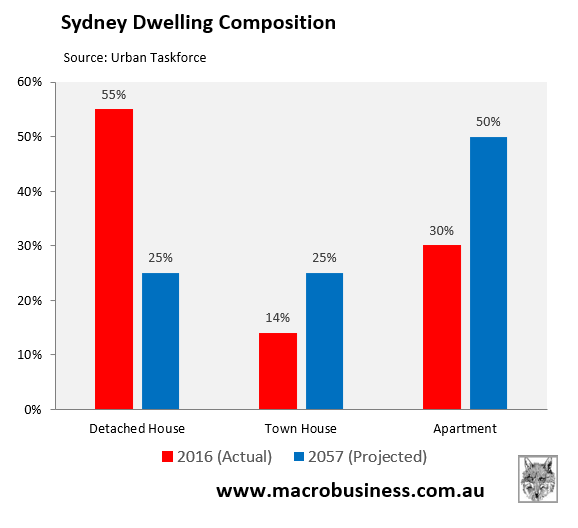The SMH’s Editorial warned that Sydney risks “becoming a city with no grandchildren, but also one with no aged care workers, police officers, shop assistants or rubbish collectors”, due to the city’s unaffordable housing.
It notes that “there are 33 suburbs on the north shore, in the eastern suburbs and in the inner west with no residents who work as police officers, firefighters or paramedics”.
The SMH’s concerns are warranted. Sydney’s housing market is extremely expensive to either purchase or rent.
In response to these concerns, the NSW Productivity and Equality Commission this month touted higher towers, smaller homes, and fewer car spaces as the solution to the state’s housing crisis:

The NSW Productivity Commission called for rules around minimum apartment sizes, storage space, natural light, and car spaces to be abolished in a bid to get more housing built and to lower costs.
According to Productivity Commissioner Peter Achterstraat, these high-rise slums “could bring Sydney rents down by as much as 10%“.
That’s right, a possible 10% reduction in rents in return for living in a shoebox slum without adequate storage or natural light. What a deal!
As usual, The SMH Editorial refused to mention that 100% of New South Wales’ recent population growth has come from net overseas migration:

In the two years to March 2024, 330,300 net overseas migrants landed in New South Wales, requiring at least 140,000 new homes.
Therefore, the optimal way to make housing more affordable in Sydney and to improve living standards is for the NSW government to demand that the federal government slash immigration.
According to Urban Taskforce forecasts, half of all Sydneysiders would be shoehorned into apartments by 2056, while only one-quarter (mainly the wealthy) would live in a detached house with a backyard.

Such a massive transformation in living arrangements would result in a significant downgrade in living standards. Is this the future that Sydney residents want?
Sadly, our media and policymakers continue to ignore the immigration elephant that is overloading the housing market, infrastructure, and living standards.

